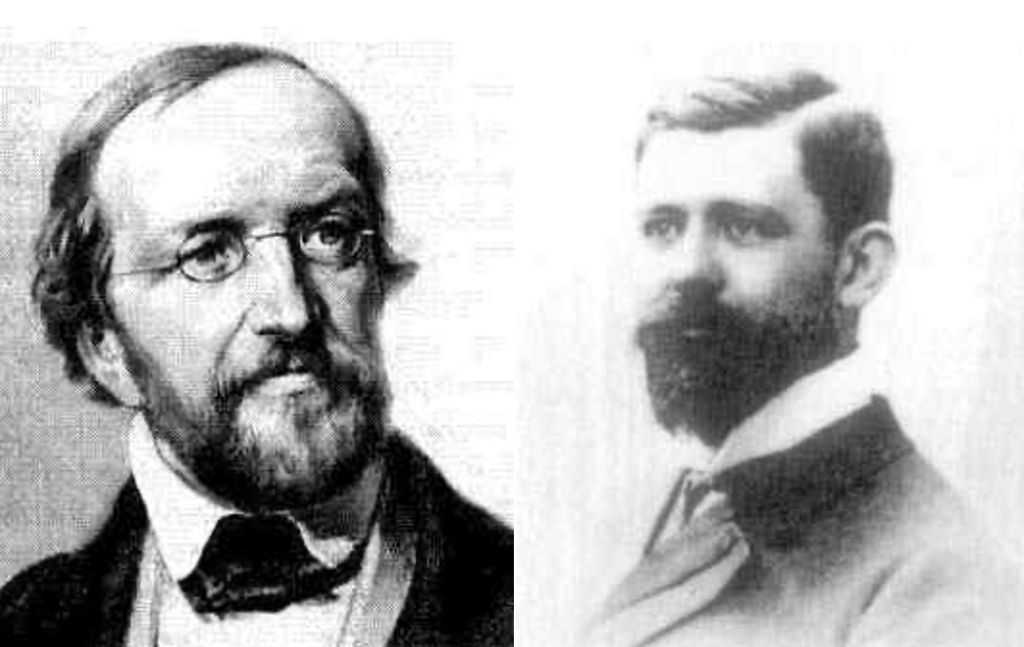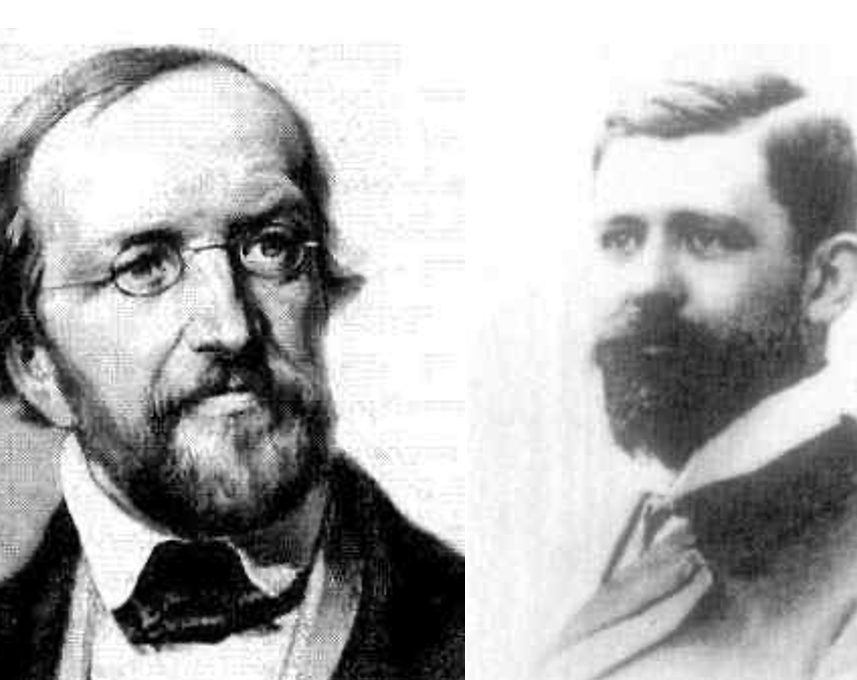By David Bressoud @dbressoud
As of 2024, new Launchings columns appear on the third Tuesday of the month.
In my February $\textit{Launchings}$ I said that there was a missing piece in Cauchy's proof that every continuous function on an interval that includes the endpoints can be integrated over that interval. His proof relies on the fact that for any given positive value $\delta$, we can make the subintervals short enough that the difference between the maximum and minimum values of the function on each subinterval is less than $\delta$. Remember that continuity is defined $\textit{pointwise}$: a function is continuous at a given point if for any positive $\delta$ we can find a sufficiently small open interval containing our point so that the difference between the maximum and minimum values of the function over that interval, what is called $\textit{variation}$ over that interval, is less than $\delta$. For an arbitrary continuous function, how short these intervals need to be can depend on the point we have chosen.
$$As an example, consider the function
An increase of 1 in the value of the function happens from 0 to $\frac{1}{2}$, then from $\frac{1}{2}$ to $\frac{2}{3}$, from $\frac{2}{3}$ to $\frac{3}{4}$, and again from $\frac{3}{4}$ to $\frac{4}{5}$. This continues, taking ever shorter intervals that shrink toward zero. If we want each value of $x$ between 0 and 1 to lie within an interval where the function changes by less than 1, then there is no lower bound on how small those intervals must be. To make Cauchy's argument work, we need more than continuity, we need what would come to called $\textit{uniform continuity}$. For a given $\delta > 0$, we want one bound on the length of the subintervals that works for all values of $x$.
$$What saves Cauchy's argument is that if the interval over which we are to integrate includes the endpoints, what today we call a $\textit{closed interval}$, then a continuous function over this interval will always be uniformly continuous. It is doubtful that Cauchy knew this fact. Historians are divided over whether Cauchy used the term ``continuity'' to mean what today we call ``uniform continuity.'' There is a good argument to be made that this was what he meant since even the notion of continuity was very poorly understood at this time. But Cauchy clearly was unaware of the result that a continuous function on a closed and bounded interval will be uniformly continuous. This would have to wait thirty years before Gustav Lejeune Dirichlet would state and prove this essential theorem.
$$Dirichlet's proof, given within a series of lectures on integration at the University of Berlin in 1852, proceeds by contradiction. He assumes that there is a function $f$ that is continuous on a closed and bounded interval $[a,b]$ but not uniformly continuous on this interval. If $f$ is not uniformly continuous then there is a $\delta > 0$ for which we can find an infinite sequence of points $a = c_0 < c_1 < c_2 < \cdots $ in the interval for which $|f(c_{k+1}) - f(c_k)| = \delta$, just as I did above with $f(x) = 1/(1-x)$. This increasing bounded sequence must converge to some value $c \leq b$. Since our function is continuous at $c$, there is an open interval containing $c$ for which the variation is less than $\delta/2$. This implies that we can find a value of $N$ such that for all $k \geq N$, $|f(c_k) - f(c)| < \delta/2$. But since our sequence is increasing and approaching $c$, we have that $c_k < c_{k+1} \leq c$, and therefore
$$a contradiction. Notes from this lecture were taken and saved, but they were not published until 1904.
Now we run into problems of attribution. Dirichlet gave these lectures again in Göttingen in 1858. In 1871 G.F. Meyer, referring to the 1858 lectures, stated this theorem and gave credit to Dirichlet. The following year, Eduard Heine published exactly this proof that a continuous function on a closed and bounded interval is uniformly continuous. He made no mention that Dirichlet was there first. This oversight is compounded by the fact that Heine was Dirichlet's doctoral student, having received his degree in 1842. Had Dirichlet known and shared this result that early? Was Heine familiar with the content of either the 1852 or 1858 lectures?
$$This question is important because there is something bigger than just uniform continuity going on here. The Dirichlet/Heine proof lies at the heart of one of the foundational results of modern analysis (the advanced calculus of the 20th century), what Émile Borel called the ``First Fundamental Theorem of Measure Theory.'' This theorem states that given any closed interval [a,b] and any infinite collection of open intervals whose union contains [a,b], there is a finite subcollection whose union still contains all of [a,b].
This implies that any continuous function $f$ on a closed and bounded interval is uniformly continuous. To see why this is so, start with any $\delta >0$. Continuity guarantees that for each point $x$ there is a positive distance $\ell_x$ such that the variation on $(x-\ell_x,x+\ell_x)$ is less than $\delta/2$. We also know that the union over all $x$ in $[a,b]$ of the intervals $(x-\frac{1}{2}\ell_x, x+\frac{1}{2}\ell_x)$ contains all of $[a,b]$. By Borel's theorem, we can choose a finite subcollection of these intervals, $(x_k-\frac{1}{2}\ell_{x_k}, x_k+\frac{1}{2}\ell_{x_k}), 1 \leq k \leq n$, whose union still contains all of $[a,b]$. Let $\ell$ be the shortest of these $\ell_{x_k}$. Now take any two points $y$ and $z$ whose distance is less than $\ell/2$. We claim that $|f(y)-f(z)| < \delta$.
$$Our point $y$ lies inside one of these shorter intervals, say $|y - x_t| < \ell/2$, and therefore $|f(y) - f(x_t)| < \delta/2$. We also have that
$$and therefore $|f(z)-f(x_t)| < \delta/2$. Putting this together, we get that
$$How do we prove Borel's theorem? Start with $c_0 = a$, and let $c_1$ be the closest point that is not contained in any of the open intervals containing $c_0$. In other words, $c_1$ will be on the right end of the open set containing $c_0$ that stretches furthest to the right. Any open set containing $c_1$ will overlap with at least one of the open intervals containing $c_0$. We let $c_2$ be the closest point to the right of all open intervals containing $c_1$. We continue in this way. The point $c_{k+1}$ is the closest point to the right of all open sets containing $c_k$. We get an increasing sequence: $a = c_0 < c_1 < c_2 < \cdots$. Either we get to an open set that includes $b$ in a finite number of steps, in which case we have found a finite subcollection of open intervals whose union is all of $[a,b]$, or our infinite sequence converges to some value $c \leq b$. But there is an open interval that contains $c$ and it must contain some $c_k$ (in fact, infinitely many of the $c_k$). This contradicts the fact that $c$ lies to the right of all of the open intervals containing any of the $c_k$.
$$Notice that this looks an awful lot like Dirichlet's proof that continuity on a closed and bounded interval implies uniform continuity. For this reason, many historians of mathematics would like to credit Dirichlet with Borel's theorem.

How to name this theorem
Attribution of Borel's theorem was complicated by the fact that several people rediscovered the basic idea. In 1880 Weierstrass used it to prove that a series of functions that converges within a closed and bounded interval must converge uniformly in that interval. Dini used this technique in 1878, Pincherle in 1882. To complicate attribution further, Dini credited Cantor with explaining this idea to him. Borel was the first to state this as a general result that applied to any collection of open intervals whose union contains an entire closed and bounded interval (more generally, any collection of open sets whose union contains a closed and bounded set). It was a result he needed for his doctoral thesis, defended in 1893 and published in 1895. He only needed it in the case where the collection of open intervals is countable, and therefore that is all he claimed. In 1900, Schönflies observed that the proof works equally well if the collection of open intervals is uncountable. Lebesgue, who had been Borel's graduate student, claimed he had known this two years earlier.
Now what to call this theorem? As stated earlier, Borel wanted to designate it as the First Fundamental Theorem of Measure Theory, a name that no one else was willing to use. Sch\"onflies, aware of Weber's recognition of Dirichlet's priority in proving uniform continuity, called it the Dirichlet-Borel Theorem. Others insisted on Borel-Lebesgue or Borel-Schönflies. It was Oswald Veblen, apparently unaware of Dirichlet's proof of uniform continuity, who began calling it the Heine-Borel Theorem.
All of this was happening in France, Italy, and Germany. The English-speaking world was pretty much shut out of these developments. The people primarily responsible for sharing continental mathematics with mathematicians in England (and to a lesser extant in America where advanced mathematics was still in its infancy) were William Henry Young and Grace Chisholm Young who learned of this theorem from Veblen. In the English-speaking world this became known as the Heine-Borel Theorem, a misnomer that we are still stuck with today. I note that the French Wikipédia calls it the Borel-Lebesgue theorem. The German and Italian Wikipedias embrace Heine-Borel. Somewhat tongue-in-cheek, the historian Pierre Dugac refers to it as the ``Dirichlet-Heine-Weierstrass-Borel-Schoenflies-Lebesgue Theorem.''
References
Borel, E. (1895). Sur quelques points de la théorie des fonctions. Annales scientifiques de
l’É.N.S. 3e série 12 , 9–55.
Cauchy, A.--L. (1823). Résumé des leçons donnés a L'École Royale Polytechnique sur le Calcul Infinitésimal, Volume 1. Paris. L'Imprimerie Royale.
Dirichlet, G. L. (1904). Vorlesungen über die Lehre con den einfachen und mehrfachen bestimmten Integralen. Braunschweig: Friedrich Vieweg. Based on notes by G. Arendt of the lectures given at the University of Berlin in 1852.
Dugac, P. (1989). Sur la correspondance de Borel et le théoréme de Dirichlet-Hein-Weierstrass-Borel-Schoenflies-Lebesgue. Archives internationales d'histoire des sciences, 39, 69—110.
Meyer, G. F. (1871). Vorlesungen über die Theorie der bestimmten Integrale zwischen reellen Grenzen, mit vorzüglicher Berücksichtigung der von P. Gustav Lejeune-Dirichlet im Sommer 1858 gehaltenen Vorträge über bestimmte Integrale. Leipzig: B.G. Teubner.

David Bressoud is DeWitt Wallace Professor Emeritus at Macalester College and former Director of the Conference Board of the Mathematical Sciences. Information about him and his publications can be found at davidbressoud.org
